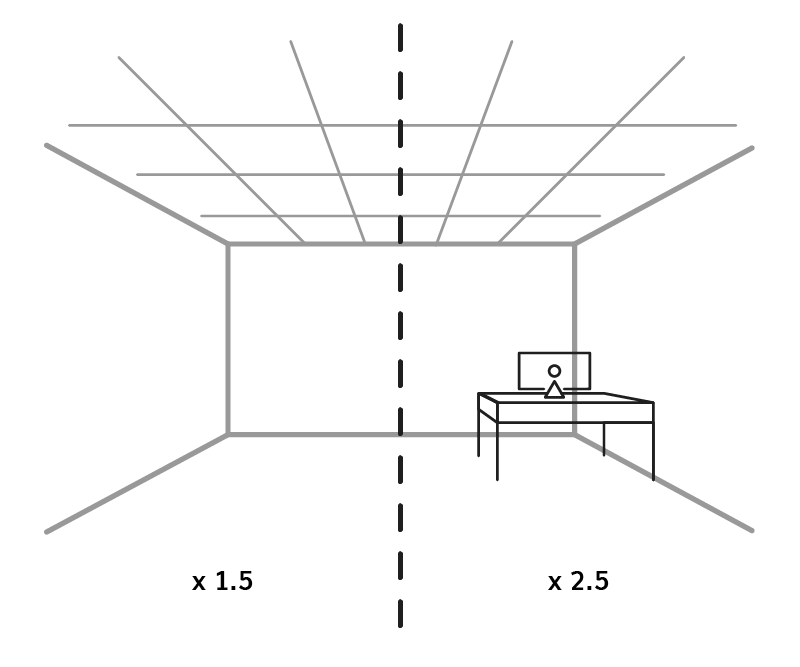When we talk about recessed lighting or downlights, it is the type of small light that sits inside the ceiling (also sometimes known as spotlights). This type of lighting is clean, modern, chic and incredibly versatile, offering coverage in even the most awkward spaces allowing you to customise the layout to your room. As well as general lighting in the kitchen, living room, bathroom or utility room, downlights can also be used to subtly accent an area or feature of a room. The beauty of downlights, among their many attributes is that they are unobtrusive and blend seamlessly into the background, whilst creating ambience around your living spaces.
Planning Ahead
Before you rush out and purchase lots of downlights it is important to plan ahead a little. Take some time to consider the following which will affect the number of lights you will need to buy.
- Room size
- Ceiling height – is it particularly high or low?
- Open plan or enclosed space
- Function of space

How Many Lights For Each Space
If you’re lucky, you may have a brilliant electrician who can look at your home and advise how many downlights you may need for each of the rooms. If not then our handy steps below will give you all the information you need.
Multiply the width of your room by the depth to work out the square footage.

Example: 10ft x 15ft = 150ft2
Multiply the square footage by 1.5 (2.5 for “task lighting” areas*).

Example: 150 x 1.5 = 225W
A large open space will require you to divide it up and calculate it in sections.
* Areas that need task lighting will naturally require more lighting, so for these rooms you would multiply for 2.5 instead of 1.5.
Divide the total wattage by the bulb wattage to work out how many fittings you’ll need.

Example: 225 ÷ 40 (Wattage equivalent) = 5.63
So we would need 6 Downlights with a 40 Watt equivalent or higher bulb
This information is intended as a guide only and if you are in any doubt, do consult an experienced installer for help.
Spacing
Is it vital to allow enough space between each downlight to ensure there aren’t too many or worse still, too few in each area. As a rule of thumb they should be roughly 1.5 to 2 feet away from the walls and 3 to 4 feet between each light. However, if your room happens to be on the smaller side, these numbers will be different. A handy trick is to divide the ceiling height by two – so if your ceiling is 12 foot high your lights should be about 6 feet apart.
Ceiling Height
Downlights are a great option for rooms with low ceilings and won’t take up the space that pendants would (you won’t have to worry about dusting intricate light fittings, either). Consider using a downlight that has a broad beam of light for smaller spaces, as this variety is designed to fill the space with light. Narrower downlights deliver light in a more concentrated beam, which might work better for rooms with higher ceilings, where the desired effect is to highlight rather than create ambience.
Light Intensity
The intensity of downlights is measured in lux and is an important factor, so take time to consider how they will be used. In the living room for example, you probably don’t want the brightest, most intense lighting but in an office or above your kitchen worktops, you will want to ramp things up. As a guide, a living room would only require around 150-200 lx (lux) yet task lighting (such as in the bathroom, over your shaving mirror) would work best at around 300 lx.
A great solution for varying the light intensity in your living spaces is using dimmers. Not only will they save you energy but they can help transform a room and are essential for mood lighting. Dimmers will afford you lots of flexibility, allowing you to work in the kitchen as well as entertain and relax.
Fire Rating and Safety
If you live in an apartment or flat it is vital that you choose downlights that are fire rated. This means the lights have been put through a series of tests guaranteeing their safety in the event of a fire.
If you’re using downlights in a bathroom they must have a rating of at least IP44 to ensure their safety around moisture and liquid.
Shop Downlights Below
- LED Downlights – Click here
- Fire Rated Downlights – Click here
- Bathroom Downlights – Click here
Reena Reeves
Reena Reeves is a writer and editor with 15 years’ experiencing working in publishing and digital media. She has a degree in Journalism and has worked for publications such as Smash Hits magazine, OK! Magazine and The Daily Express. Reena has been writing about lighting since early 2017 and has supported us with website copy, product descriptions and articles on lighting trends and commercial lighting solutions.

